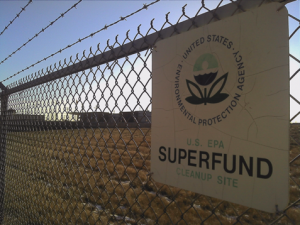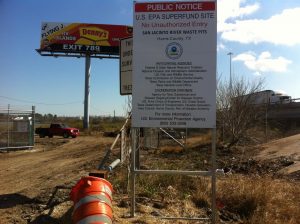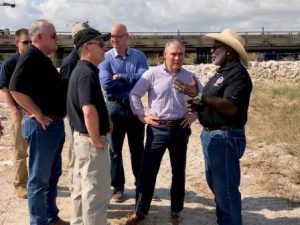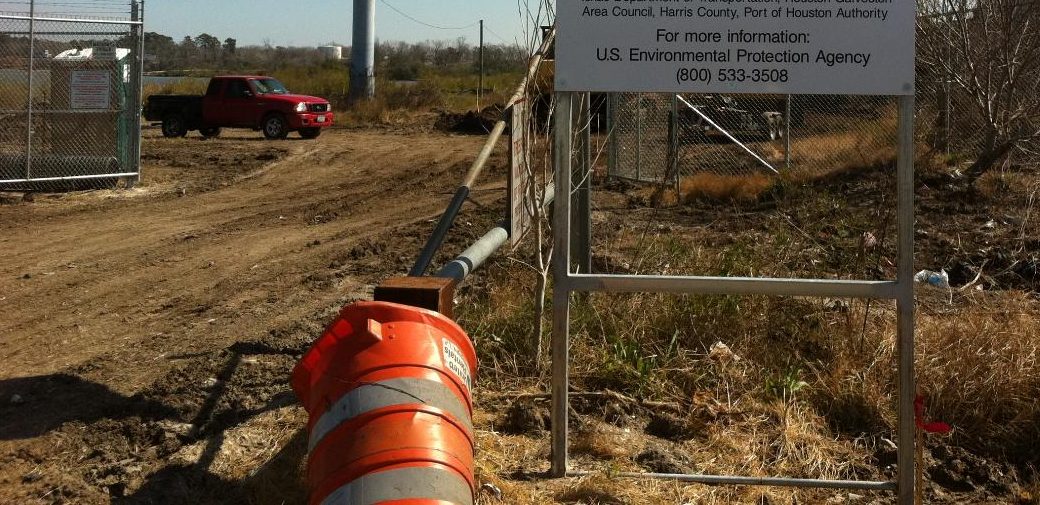
Communities near Superfund sites are in for a rough couple of decades.
We all know that climate change is steadily intensifying extreme weather events. Sea level rise and warming oceans are already causing more intense hurricanes and superstorms, culminating in disastrous storm surge along coastlines and significant inland flooding.
As waters rise, low-lying toxic Superfund containment sites face growing risk for site damage and leakage of hazardous waste into nearby neighborhoods.
REFRESHER: Superfund is the informal name for the 1980 Comprehensive Environmental Response, Compensation, and Liability Act (CERCLA). Superfund gives the EPA authority to identify contaminated areas posing human health or environmental risk and hold polluters responsible for cleanup efforts. Contamination of these sites typically comes from past toxic or hazardous waste dumping from manufacturing and industry.
At the same moment as Superfund sites nationwide are experiencing increased risks due to climate change, the Trump Administration is overhauling the National Superfund program. Following an Administration directive to cut regulations, EPA Administrator Pruitt established a Task Force in 2017 to streamline the program, which has been plagued with bureaucratic bottlenecks for years. In essence, the Task Force was directed to produce a set of recommendations to clear sites off the Superfund National Priorities List (NPL).
The Task Force released a report in May, 2017 with 42 recommendations to simplify remediation and speed up new construction and development, keeping step with the Trump Administration’s focus on commercial, industrial, and private interests. Administrator Pruitt adopted the recommendations almost immediately upon release.
The Elephant in the EPA Office
Streamlining processes isn’t necessarily troublesome, but there is no mention of climate change preparation in the new Superfund protocol. This isn’t surprising, as it reflects the Trump Administration’s deregulation rhetoric and deliberate inaction on all things climate change, but the 2017 hurricane season in particular drove home the need to prepare Superfund sites for extreme weather events without delay. This is especially important because according to a December 2017 AP report, 327 Superfund sites are in areas prone to flooding or vulnerable to climate change-induced sea level rise.
By ignoring climate change risk when dealing with Superfund sites, the EPA is damning surrounding communities to exposure from leaks. Worse, leaked waste could also be dragged to areas further away as waters recede following extreme weather events, spreading contamination.
San Jacinto River Superfund Site Contamination

The San Jacinto River Superfund site in Houston is a striking example of the lack of climate change prep causing frightening contamination. The site (one of 13 flooded in the Houston area post-Hurricane Harvey) was a dumping ground for paper mill toxic waste in the 1960s and has been on the NPL since March of 2008. Its waste pits were capped in 2011 to limit contamination of the San Jacinto River, but were found to be leaking in 2015.
During Hurricane Harvey’s landfall in 2017, the already leaky pits were breached, releasing dioxin-laden sludge into the area. Water samples nearby following the hurricane showed dioxin contamination of over 2,000 times the target cleanup level.
Upon visiting the site post-Harvey, Administrator Pruitt directed the International Paper and Industrial Maintenance Corporation (the Potentially Responsible Parties, or PRPs) to act quickly on the leak. Almost immediately, a well-funded ($115 million) plan was enacted and a court agreement was reached for the PRPs to remove contaminated materials. The site was removed from the NPL in April 2018.
Don’t be Fooled

At first glance, the San Jacinto River case is a success story, but reader beware! Recognize that it took a visit from the Administrator himself in the aftermath of a hurricane before a site that sat on the NPL for a decade was remediated, with no follow-up commentary or policy shifts from the Administration regarding climate change-induced toxic leakage from Superfund sites.
The San Jacinto River site is just one example of the shortcomings of the new protocol. It is not an isolated incident. If climate change risk had been part of the new adopted Superfund protocol, other low-lying sites would already be in the process of sped-up remediation.
Surely, there’s merit in streamlining federal protocol bogged down in bureaucratic hold-ups, and the updated Superfund protocol may certainly help speed up remediation efforts. Still, we must remain cognizant of overhauls that trade health and safety for ill-advised deregulation and redevelopment interests. Omitting climate change puts politics over people, and is bound to have dire consequences in decades to come.

